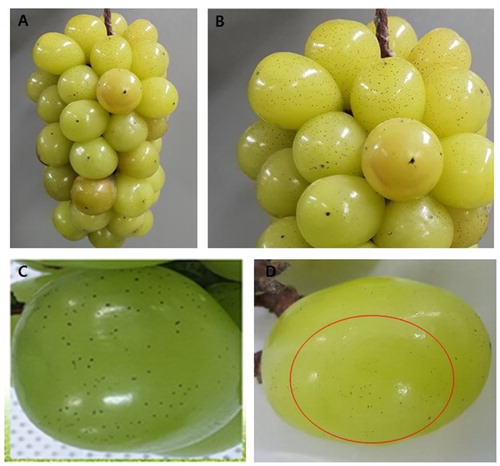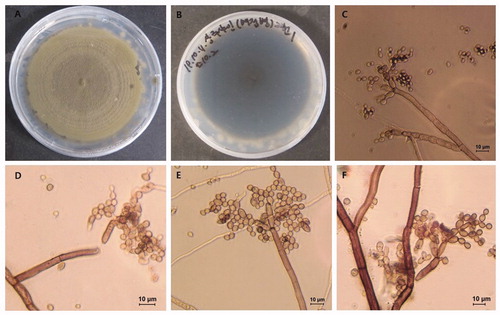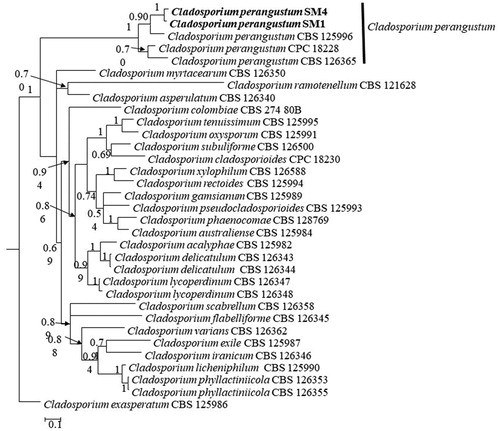Figures & data
Figure 1. Symptoms of flyspeck on Shine Muscat fruits. (A, B) Symptoms on naturally infected grapes; (C, D) Flyspeck symptoms on artificially inoculated fruit.

Figure 2. Morphological characteristics of Cladosporium perangustum (SM1). (A, B) Fourteen-day old colony; (C–F) Macronematous conidiophores and conidial chains. Scale bar = 10 μm.

Table 1. Comparative study of morphological characteristics of present and previously identified isolates of Cladosporium perangustum.
Figure 3. A 50% majority-rule consensus tree (Bayesian inference) using a combined dataset of ITS, EF1-a and ACT sequences. The posterior probability (>0.5) are given at the nodes. The scale bar shows the number of substitutions per site.

Table 2. List of fungal isolates present and their Genbank accession numbers.
